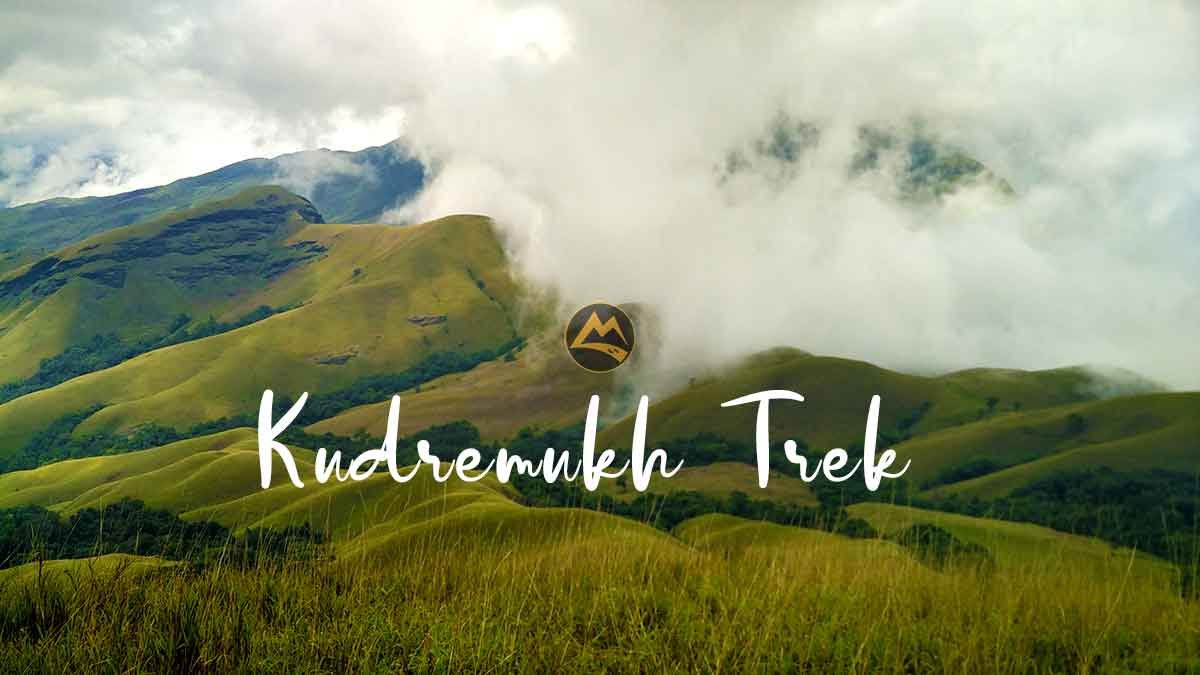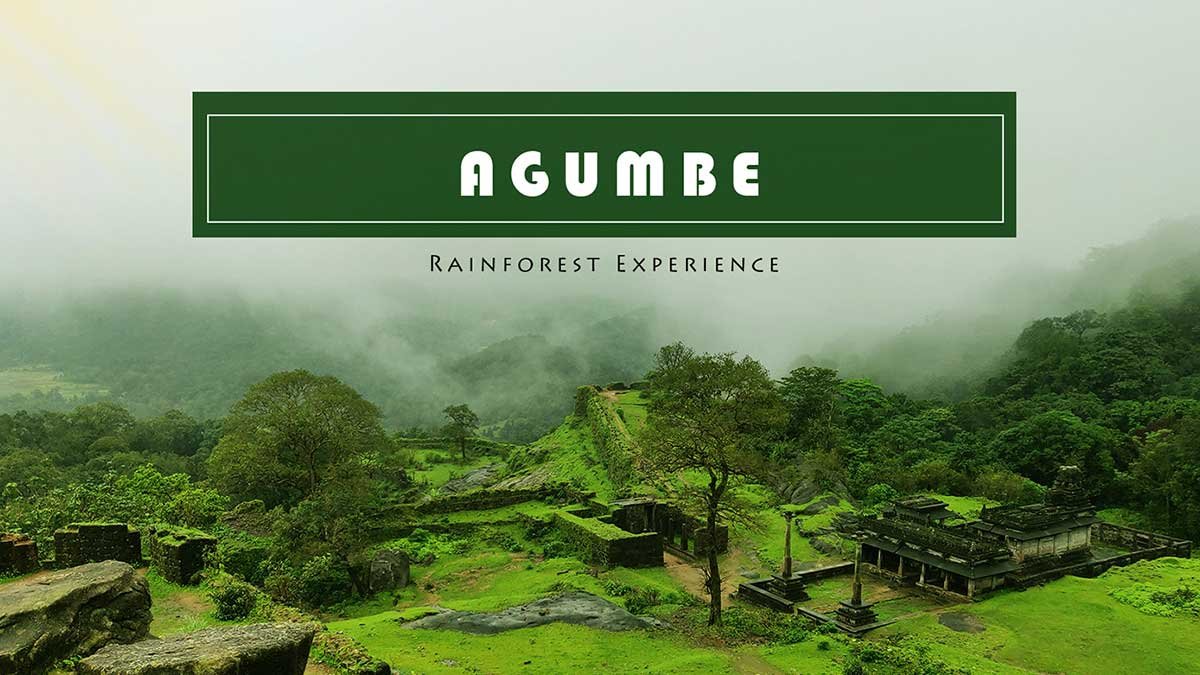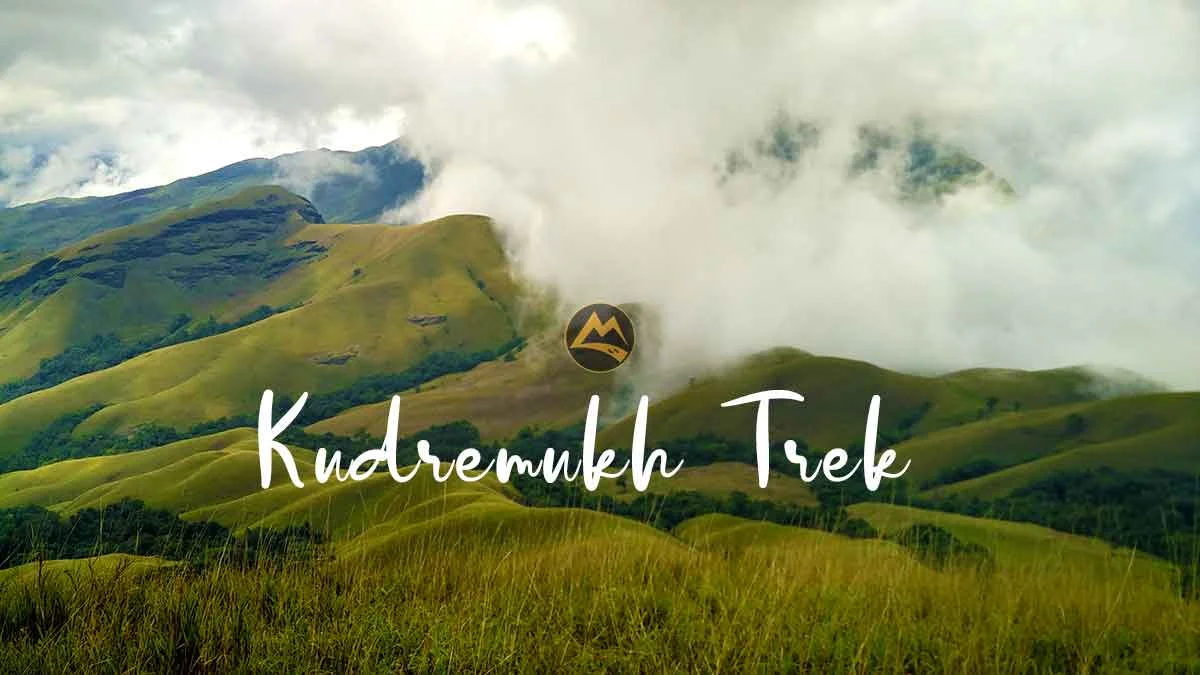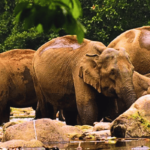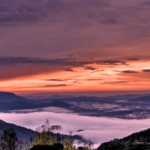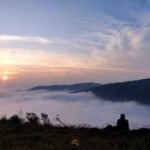Why should you go for Kudremukh trek?
Here are are the top 5 reasons to book Kudremukh trek package:
- Kudremukh is easily the most famous trek in South India. It attracts trekkers from all over the country because of its unique landscape.
- It has the most beautiful rolling grasslands you will ever encounter on any trek.
- Kudremukh sanctuary has a dense evergreen forest area owing to its location that attracts torrential rainfall.

Things to expect on the Kudremukh trek
- Kudremukh is a natural wonder. It’s very hard to find such a stunning landscape anywhere else in the country.
- It is a challenging trek given trekkers have to hike up 10 Km on an inclined terrain and also return the same distance before it gets dark.
- Trekkers have to cross at least 3 different streams to ascend Kudremukh. Get ready to remove your trekking shoes when you cross them.
- The area is blessed with plenty of waterfalls. After a strenuous trek, one can take a dip under one of them the next day.
- Being part of a protected wildlife sanctuary, it is highly restricted by the forest department in order to protect its pristine natural environment. So much that it allows only 50 trekkers per day. More demand and less supply make it even more precious.
- Kudremukh base has dedicated trekkers homestays who provide really basic facilities. Unlike other places (Coorg Tadiandamol, Kodachadri) you cannot get what you want in terms of facilities here.
- It’s possible you may not get permission to trek on your first attempt. So it’s better to keep a buffer day to give it a second try.
- Whoever cannot get their number for Kudremukha does another trek called Kurinjal peak trek arranged by the forest department as an alternative. Kurinjal also belongs to Kudremukh National Park.
Geography
Kudremukh is located in the heart of western ghats at a distance of 330 Km from Bangalore.
It is the 3rd tallest peak of Karnataka. It falls under Chikmagalur district which is also home to the highest peak of Karnataka called Mullayanagiri.
All the mountain areas in Karnataka are logically named as a region called Malenadu. Watch this famous song describing its unique culture, beauty, and food.
Kudremukh trek experience
The action begins at the Forest department check post on the outskirts of Mullodi village. You have to present yourself early in the morning. The dedicated trekkers’ homestay would have already served a hot local breakfast along with freshly grounded coffee. They would have given you a lunch packet that is tucked inside your small backpack, preferably a waterproof one. The proximity of the homestay to the check-post will surely help you breeze past others to stand in line.
Once we get our permission, there is no stopping us. Kudremukh peak is almost 10 Km from the base. The trek starts with the rich vegetation of the Shola forest which is typical to western ghats. The forest is followed by a patch of grasslands which usually knee heigh. This pattern will repeat many times for the next 3 Km until we reach a certain altitude. We will also cross 3 river streams along our trail. The rocks are slippery and it’s better to remove our shoes before attempting to cross them. One can expect an army of leeches usually either side of the stream as they thrive in the wet environment. If it’s a Kudremukh monsoon trek, it’s going to be wild and wet everywhere. After crisscrossing many iterations of forest and grassland, we will reach a point called Ontimara, translated to “lonely tree”. We can spot the “horse face” of Kudremukh peak close to this spot. The trail turns flat to lead us to the ruins of “Lobo house”. One would wonder how a family used to stay here at the time of no electricity.
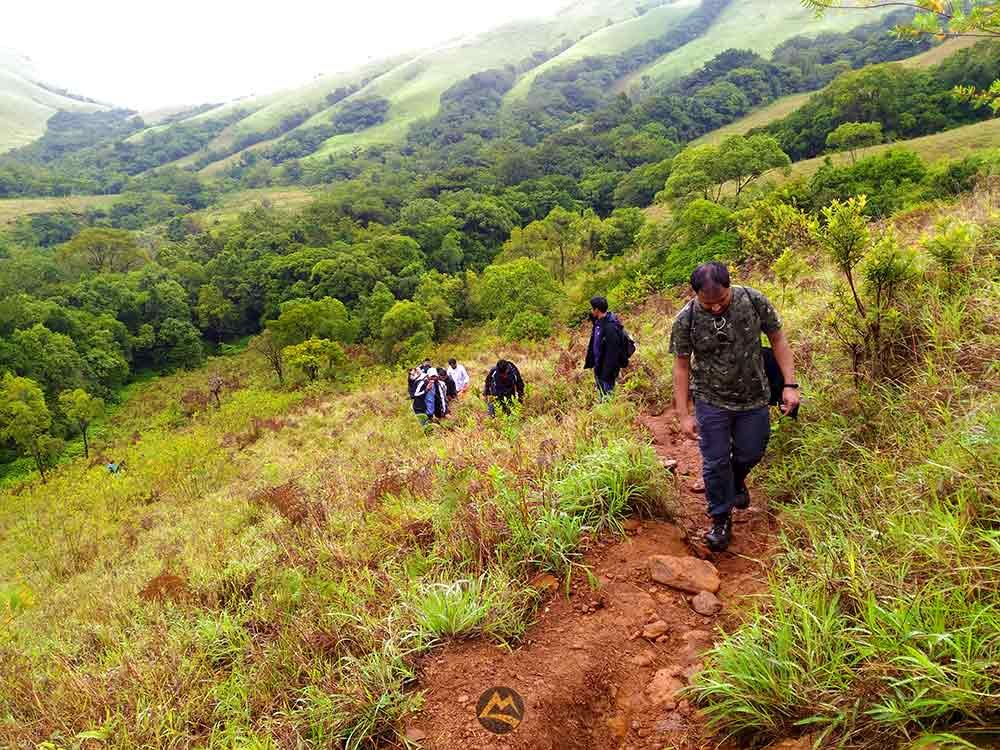
From here we have to follow a gradually ascending path climbing uphill after the hill that looks like gigantic steps designed by nature. The fascinating thing with Kudremukh trek is, once we climb up a hill, we can look back to find a clear picture of the hill we just climbed. It’s a linear and inclined trail that makes it possible. This pattern repeats numerous times. After a while we can find a captivating setting of stacks of hills carpeted by thick green grass arranged together. This is the most unique backdrop of Kudremukh that etches in every trekker’s mind. The tranquility of the Kudremukh National Park will make this extremely beautiful cascade of hills even more appealing.
With such a clear picture, there is a good chance of finding a bit of wildlife, if you are alert enough to spot it. A series of zig-zag trails will take us to the penultimate hill where we can see Kudremukh peak one final time. A 20-minute steep climb from here will take us right on top of the horse face. On a clear day we will get to see the almost 360-degree view as Kudremukh is the highest peak of its mountain range. Thick clouds hovering around during monsoons may play a spoilsport to bask in the panorama. But then, you can never get that pure greenery in other seasons.
The all-important: Stay
The stay at Kudremukh is very basic. There are about 3 dedicated homestays which cater to trekkers in Mullodi village. They provide gender specific dormitories and common bathrooms. One may find trekkers of different locations and groups in the same stay. The food is basic but edible. They give small foam sheets to sleep at night instead of beds or mattresses. It’s better to carry your own blanket or sleeping bag.
Kudremukh in different seasons
- Monsoons:
Being in the heart of western ghats, the months of June to September bring plenty of rains to Kudremukh. Thick clouds, intermittent rains, and leeches constantly accompany trekkers. There will be lots of water in the streams. Monsoon trek to Kudremukh is indeed famous among trekkers as it poses a different kind of experience. This is one of the best times for the raw Kudremukh trekking experience. - Winter:
Months from October to January attract plenty of trekkers. The rains would have reduced and landscapes would have turned slightly brownish. Still there will be plenty of water in the hills because of the amount of rainfall and huge retention capacity of grasslands. The weather is mostly pleasant to climb during the day. Cold evenings and colder nights are the new normal. This is probably the best time for Kudremukh trek if you want uninterrupted panoramic views of rolling hills. - Summer:
February to May offer clear views but the forest department may block the trek to protect it from human-induced forest fires.
10 Interesting facts about Kudremukh
- Kudremukh from Kannada translates to “horse face” which appears like a Knight in Chess.
- At a height of 1892 meters, Kudremukh is the 3rd highest peak of Karnataka. The 1st being Mullayanagiri and 2nd being Bababudangiri. Incidentally all these peaks belong to Chikmagalur district of Karnataka.
- Kudremukh trek distance is 20 Km up and down. Trekkers usually start early morning around 7 AM and get back by evening 5 PM
- The tremendous amount of rainfall received by this area gives birth to 3 rivers – Tunga, Bhadra, and Netravathi.
- Kudremukh is carpeted by grasslands which have a high water retention capacity. Because of this it looks green most of the year.
There used to be active iron ore mining at Kudremukh which was later banned. There is a huge abandoned township today which is called a “ghost town” in the western ghats. - Kudremukh is part of Kudremukh national park which is home to several animals like Malabar Civet, Leopard, Slot Beer, Giant Flying Squirrels, Sambar, Lion-tailed Macaque.
- The area around Kudremukh is blessed with many streams and waterfalls.
- Kudremukh trek difficulty level is classified as “Moderate to Difficult”. One would need prior trekking experience to do this trek.
- Trekking is restricted to 50 people per day for Kudremukh by the forest department. There is no prior reservation. Every trekker has to appear in person at the check post.
- Trekking is restricted to 50 people per day for Kudremukh by the forest department. There is no prior reservation. Every trekker has to appear in person at the check post.
Check out about this Kudremukh Trek Experience!
Dandeli Tour Packages, Munnar Tour Packages, Gokarna Murudeshwar Honnavar Tour, Kodiakanal Tour Packages , Kotagiri and Conoor Tour Packages, Coorg Tour Packages, Ooty Tour packages, Wayand Tour Packages, Chikmagalur 2 days tour packages, Agumbe Tour Packages, Malvan Scuba Diving, Coorg Long Weekend Tour Packages, Mulki Kayaking Packages.
Sikkim Tour Packages(6D/5N), Nagaland Tour Packages with Dzukou Valley, Meghalaya Tour Packages(No Trekking), Hornbill Festival Tour With Dzukou Trek- Nagaland (6D/5N), Nagaland Backpacking Trip With Dzukou Valley Trek (6D/5N), Meghalaya Backpacking Trip(6D/5N), Tawang Backpacking Trip (7D/6N), Sikkim Backpacking Trip (6D/5N), Tawang Private Trip, Kaziranga National Park Safari (2D/2N),
